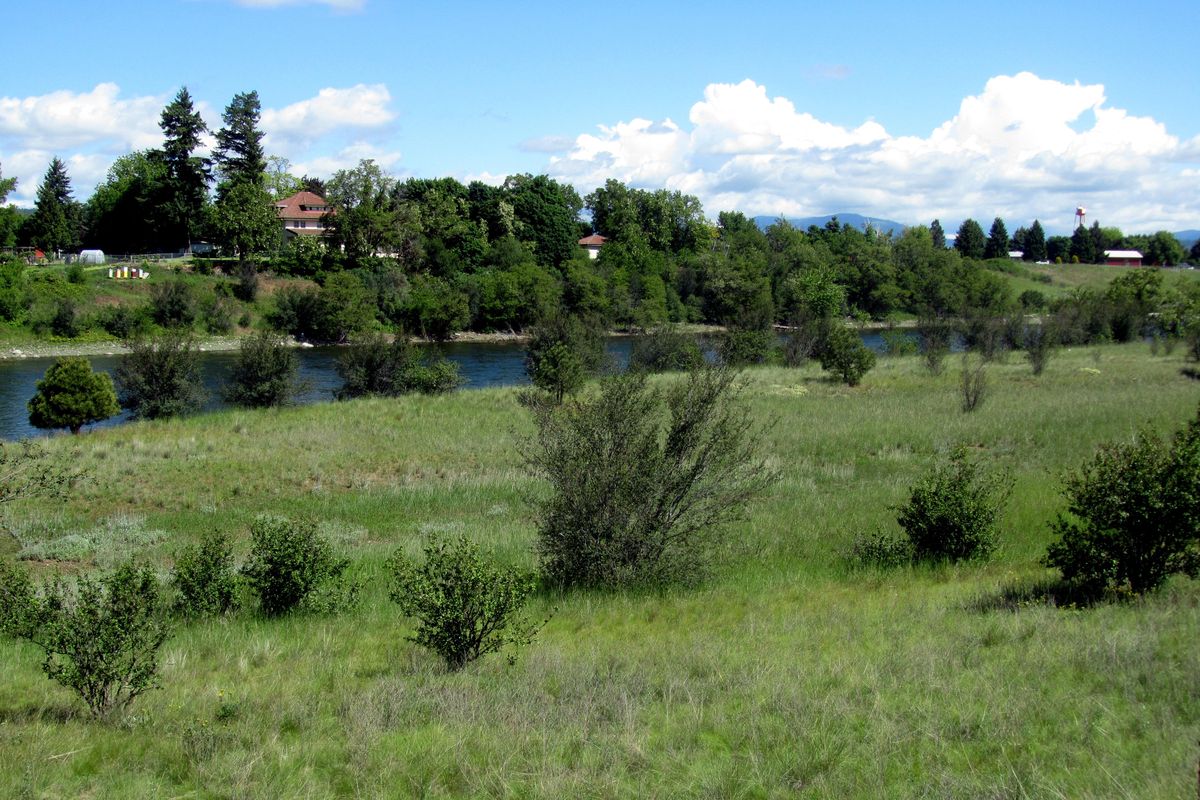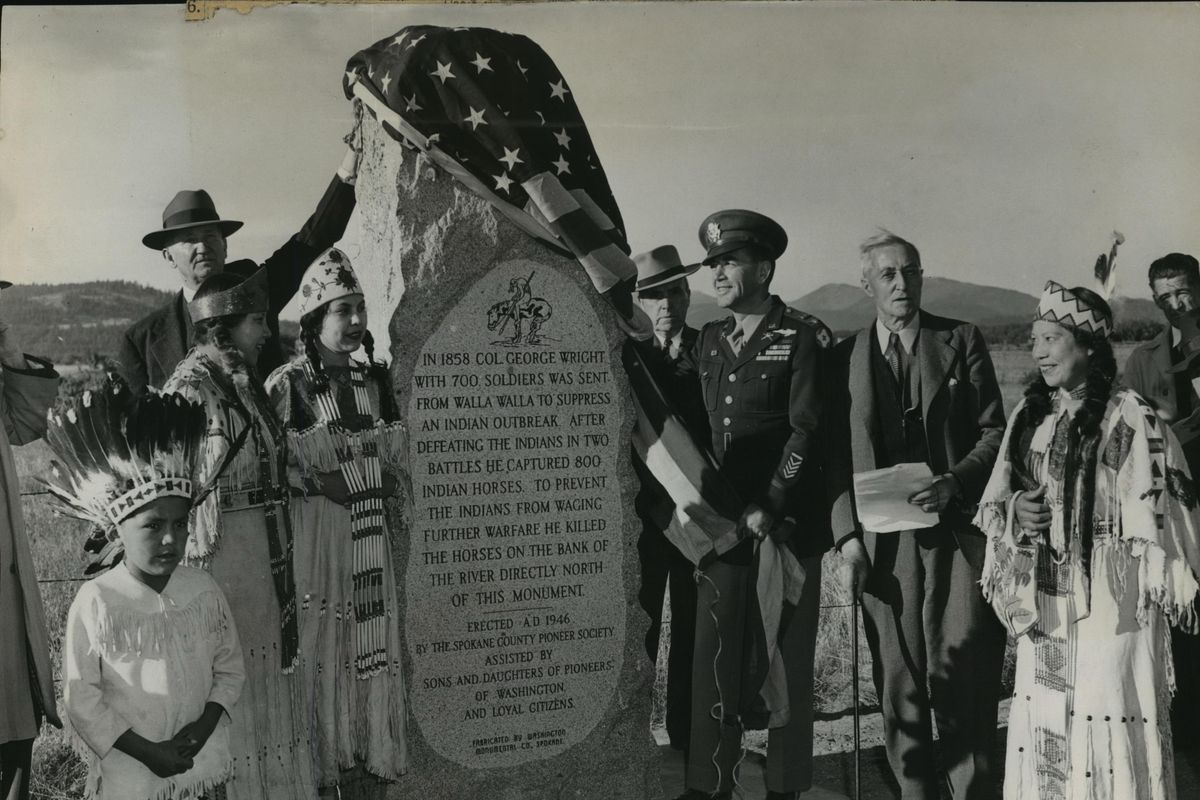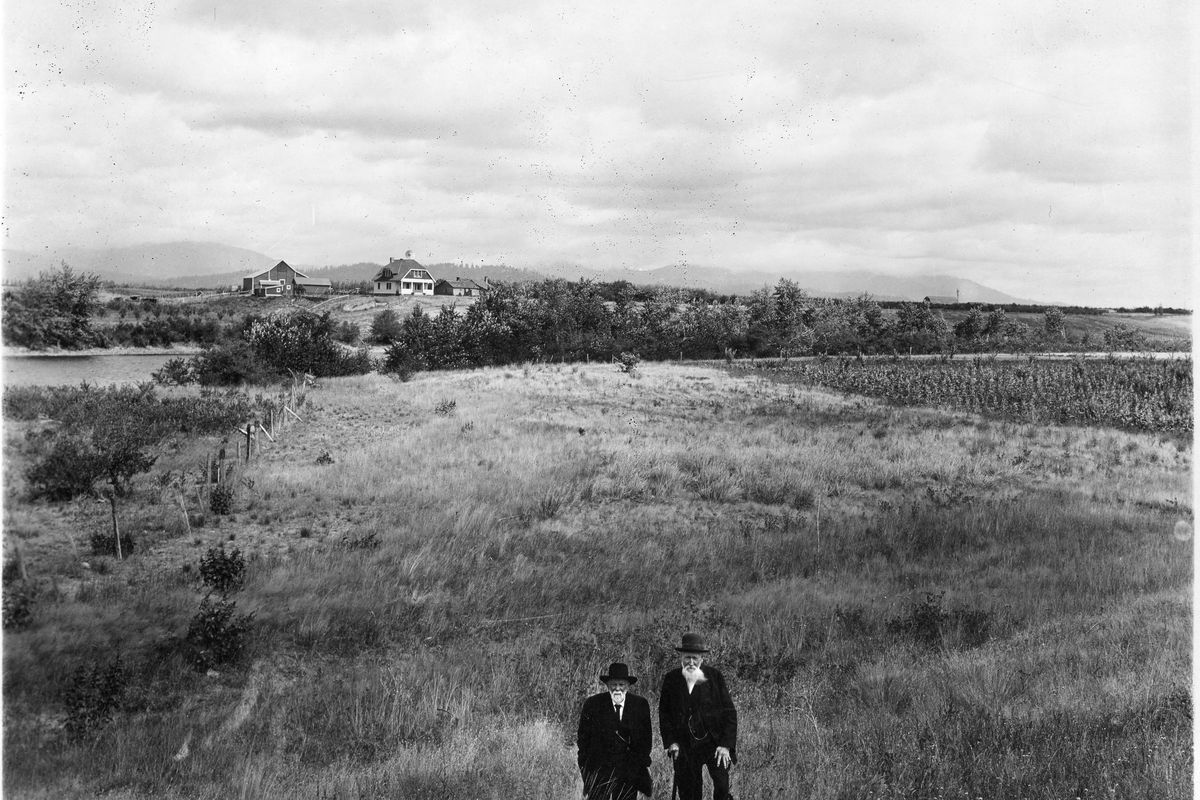Horse massacre healing ceremony will mark 160th anniversary of event in region’s history
No specific information is available except that these two elderly men are standing at the site of “Col. Wright’s horse slaughter camp” circa 1920. The site is along the Spokane River a couple of miles from the Idaho state line. If this date on the photo is true, it is feasible these two men were veterans who participated or were at the 1858 killing of hundreds of horses belonging to the Indian tribes in the region. The photo was credited to Frank Palmer and was provided by via the Northwest Room, the Spokane Public Library (Northwest Room / SR)
The local group One Peace Many Paths will host a horse massacre healing event Sunday at 3 p.m. at the Spokane Tribal Gathering Place next to City Hall, 808 W. Spokane Falls Blvd.
The event marks the 160th anniversary of the U.S. Army slaughtering hundreds of horses from the local Native American tribes. A historical monument marks the site of the slaughter near the Idaho border just north of Interstate 90.
The World Peace Prayer Society has donated a peace pole with an inscription, “May peace prevail on Earth,” that will be installed at the Gathering Place.
Sunday’s ceremony will include drumming, prayers for peace, details about the horse slaughter and dedication of the peace pole. All are welcome to attend.
In 1858, Eastern Washington was still closed to white settlers, but trappers, prospectors and traders roamed the region. After Indians killed two prospectors, Lt. Col. Edward Steptoe was sent to investigate, sparking a 10-hour battle with Indians near modern-day Rosalia. Steptoe and the remnants of his unit survived only by retreating under cover of darkness.
In retaliation, Col. George Wright took revenge against the Indians, including the Coeur d’Alene, Spokane and the Palouse Indians, who kept a large herd of horses, numbering 800 head or more, along the river east of Spokane.
Wright sent two companies of soldiers to slaughter the animals and destroy the shelters and feed stored for the animals, which took two full days in September. The move effectively disarmed the tribes and led to some instances of winter starvation.
The bleached bones are still buried under the grassy banks of the Spokane River. A stone monument was erected in 1946 to mark the site of Horse Slaughter Camp. Today, the Centennial Trail winds through the area where the horses were killed.


